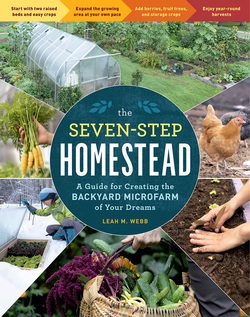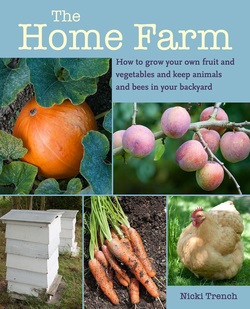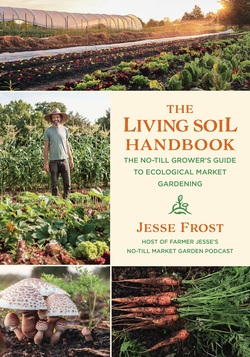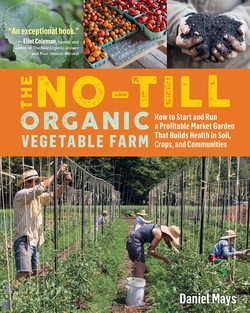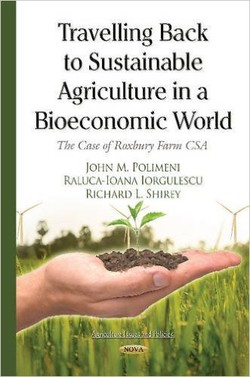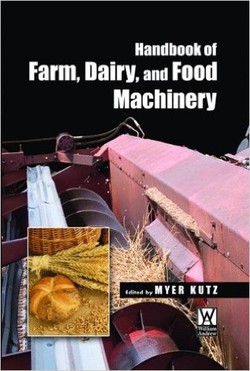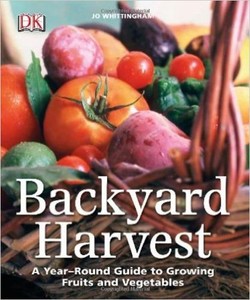راهنمای کاملا تصویری کشاورزی

“راهنمای کاملا تصویری کشاورزی” یک راهنمای دانشنامهای جامع برای کشاورز مبتدی، کشاورز تفریحی و کشاورز خانواده در مقیاس کوچک، مناسب میباشد.
Philip Hasheider و Samantha Johnson، متخصصان کشاورزی، این حرفه را از ابتدا تا انتها شرح میدهند: ساخت حصار خود، تعمیر ماشینآلات خود و کسب آگاهی لازم برای خرید یک تراکتور.
بهجای خرید یک کتاب درباره هر موضوع، شما فقط به همین یک کتاب نیاز دارید که مهمترین و مرتبطترین اطلاعات درباره تمام جنبههای راهاندازی یک مزرعه را در یک نسخه دستی، گردآوری کرده است. و برخلاف کتابهای دیگر، بهخصوص برای صاحبان یک مزرعه کاری، طراحی شده است.
این راهنمای کاربردی، مشاورههای تخصصی در زمینه پرورش دام و کشت، تعمیرات، برداشت و قصابیکردن، مدیریت یک جنگل حفاظتشده و موارد بیشتر دیگر را که بهسختی حاصل شدهاند، فراهم میکند.
Philip Hasheider و Samantha Johnson، متخصصان کشاورزی، این حرفه را از ابتدا تا انتها شرح میدهند: ساخت حصار خود، تعمیر ماشینآلات خود و کسب آگاهی لازم برای خرید یک تراکتور.
بهجای خرید یک کتاب درباره هر موضوع، شما فقط به همین یک کتاب نیاز دارید که مهمترین و مرتبطترین اطلاعات درباره تمام جنبههای راهاندازی یک مزرعه را در یک نسخه دستی، گردآوری کرده است. و برخلاف کتابهای دیگر، بهخصوص برای صاحبان یک مزرعه کاری، طراحی شده است.
این راهنمای کاربردی، مشاورههای تخصصی در زمینه پرورش دام و کشت، تعمیرات، برداشت و قصابیکردن، مدیریت یک جنگل حفاظتشده و موارد بیشتر دیگر را که بهسختی حاصل شدهاند، فراهم میکند.
سال انتشار: 2014 | 320 صفحه | حجم فایل: 34 مگابایت | زبان: انگلیسی
The Complete Illustrated Guide to Farming
نویسنده
Philip Hasheider, Samantha Johnson
ناشر
Voyageur Press
ISBN10:
0760345554
ISBN13:
9780760345559
قیمت: 16000 تومان
برچسبها: زراعت
Crop Rotation Crop rotation, like green manures, dates back to the dawn of agriculture.
It fell into disuse with the advent of modern chemical fertilizers and monocropping, but this was to the peril of soil health, so rotational cropping is considered a vital spoke in the wheel of organic farming today. In its simplest form, crop rotation is the act of planting something different in a field every year. A rotational sequence is usually for a series of years, coming back to the original crop after four or more years. This cycle disrupts weed and pest activity, helps eliminate soil-borne diseases, and aids soil fertility by growing crops with different nutrient needs in a field (thereby not using up one nutrient such as nitrogen by repeatedly planting corn in the same plot). Some crops do well if rotated after other crops, and when green manures and cover crops are included in the rotation, rotational planting provides the best of all worlds.
The idea is not just to vary the crops in a field, but the family of crops. Rotating cabbage after broccoli does no good, for example, because both are in the brassica family, subject to the same pests, diseases, and nutrient needs. So the first key to a good rotational plan is to vary the crop family on any one field or area. The first key to a good rotational plan is to vary the crop family on any one field or area.


